Emily Jordan Presents Digital Heritage Project at Celebration of Learning
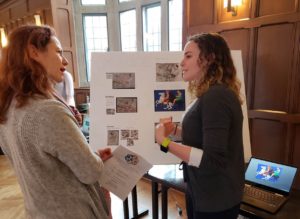 Emily Jordan, a student in Betsey Robinson’s fall semester HART 2815 course, Digital Heritage: Methods and Practice, participated in the Center for Teaching’s Celebration of Learning held February 4 in Alumni Hall. The event, “an exhibition of students as producers,” featured students from all over campus sharing what they have learned, created, designed, and discovered, and providing the Vanderbilt community with a picture of deep learning across the colleges and schools.
Emily Jordan, a student in Betsey Robinson’s fall semester HART 2815 course, Digital Heritage: Methods and Practice, participated in the Center for Teaching’s Celebration of Learning held February 4 in Alumni Hall. The event, “an exhibition of students as producers,” featured students from all over campus sharing what they have learned, created, designed, and discovered, and providing the Vanderbilt community with a picture of deep learning across the colleges and schools.
Jordan proposed a virtual reconstruction for a sculptural panel from the west frieze of the Parthenon (ca. 447-438 BCE); thus her project title, “Digital Restoration of Block XI of the Parthenon’s West Frieze.” Her reconstructed panel shows a pair of mounted riders astride their horses as active participants in the Panathenaic Festival procession, the subject of the Parthenon frieze that ran continuously around the upper part of the cella’s exterior walls.
In Robinson’s course Jordan studied the history of the Parthenon and its sculpture, the cultural meaning and significance of its sculptural decoration, and how the creation of 3D digital models can be applied in documenting, restoring, and analyzing cultural heritage. Robinson, acting chair and associate professor of the history of art, team-taught the class via videoconferencing with Bernard Frischer and Matthew Brennan, professors in the Department of Informatics at Indiana University and virtual archaeologists, who work with digital technologies to reconstruct and visualize historic and cultural heritage sites, landscapes, architecture, and ancient artifacts.
*Photograph courtesy of Betsey Robinson
Posted by vrcvanderbilt on February 13, 2019 in Digital Humanities, Events, HART, News, Student/Alumni, Vanderbilt University, VRC
Memorial Service for Barbara Tsakirgis Set for February 23
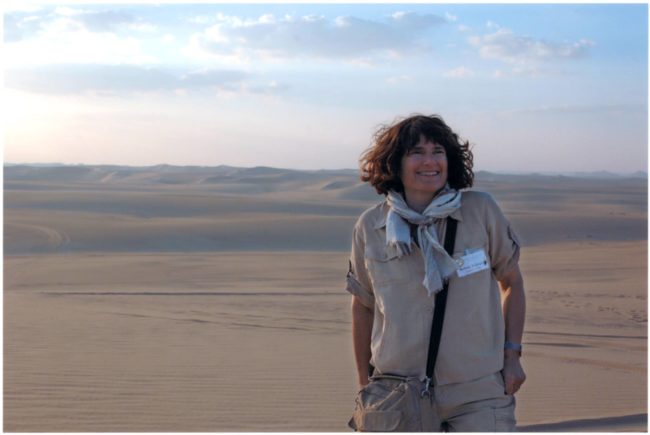 The History of Art Department is deeply saddened by the loss of Barbara Tsakirgis, beloved colleague and teacher, who died at home on January 16 after a three-year battle with ALS. A renowned scholar on ancient Greek domestic architecture, she was a professor of history of art, emerita, and classical studies, emerita, having joined the Vanderbilt faculty in 1984.
The History of Art Department is deeply saddened by the loss of Barbara Tsakirgis, beloved colleague and teacher, who died at home on January 16 after a three-year battle with ALS. A renowned scholar on ancient Greek domestic architecture, she was a professor of history of art, emerita, and classical studies, emerita, having joined the Vanderbilt faculty in 1984.
A memorial service for Tsakirgis will be held Saturday, February 23, at 2 p.m. in Benton Chapel on the Vanderbilt campus.
 Dedicated to the field of classical archaeology since the age of 11, Tsakirgis enhanced the curriculum at Vanderbilt by adding an archaeological dimension. While she studied and taught the art and archaeology of the entire Mediterranean world, Near East, and Egypt, her greatest love was Greece, her ancestral home, where she pursued much of her research. In addition to her extensive work at the Hellenistic city of Morgantina in central Sicilty, she was also a longtime member of the research and excavation team at the Agora, the city center and marketplace of ancient Athens.
Dedicated to the field of classical archaeology since the age of 11, Tsakirgis enhanced the curriculum at Vanderbilt by adding an archaeological dimension. While she studied and taught the art and archaeology of the entire Mediterranean world, Near East, and Egypt, her greatest love was Greece, her ancestral home, where she pursued much of her research. In addition to her extensive work at the Hellenistic city of Morgantina in central Sicilty, she was also a longtime member of the research and excavation team at the Agora, the city center and marketplace of ancient Athens.
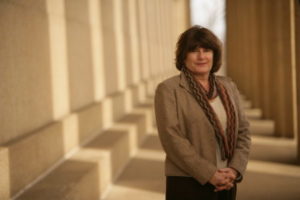 Many alumni, undergraduate as well as graduate, are quick to recall her erudition, her eloquence, her compassion and generosity, and her good humor. Her profound influence inspired many of her students to pursue teaching careers in classical art and archaeology.
Many alumni, undergraduate as well as graduate, are quick to recall her erudition, her eloquence, her compassion and generosity, and her good humor. Her profound influence inspired many of her students to pursue teaching careers in classical art and archaeology.
Here are links to some of the lovely tributes written in honor of Tsakirgis (Vanderbilt News, Vanderbilt Hustler, and Archaeological Institute of America), a testament to her outstanding accomplishments over the years.
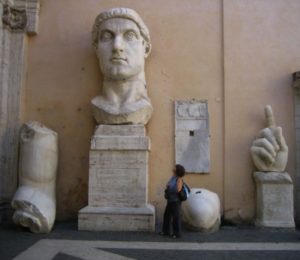 Tsakirgis is survived by her husband of 36 years, Jeremy Spinrad, who is an associate professor of computer science; and two daughters, Demetria and Thalia.
Tsakirgis is survived by her husband of 36 years, Jeremy Spinrad, who is an associate professor of computer science; and two daughters, Demetria and Thalia.
The Archaeological Institute of America has created a fund to establish the Barbara Tsakirgis endowed lecture. Other donations may be made in her memory to ALS or to the American School of Classical Studies at Athens.
*Barbara in the Great Sand Sea, Egypt (2006); at the top of Mt. Helikon, Greece (2009); as community advocate for the Nashville Parthenon (courtesy Daniel Dubois), and gazing up at the colossal head of Constantine, Palazzo dei Conservatori, Rome. Other photographs courtesy of Betsey Robinson, acting chair and associate professor of the history of art, who traveled and worked closely with Tsakirgis for the past ten years.
Posted by vrcvanderbilt on February 6, 2019 in Events, HART, News, Vanderbilt University, VRC
Andrea Seri to Present “Cultures in Clay” Lecture on February 6
 Often called the cradle of civilization, the ancient Near East witnessed the emergence of remarkable cultures from the fourth through the first millennia BCE. From those cultures surfaced novel systems of writing that addressed the range of lived experience, artistic and literary expression, and history and politics. While plentiful but not ubiquitous, clay became the medium for communication in inscriptions, in addition to its role as an essential material for construction, figurines and utensils.
Often called the cradle of civilization, the ancient Near East witnessed the emergence of remarkable cultures from the fourth through the first millennia BCE. From those cultures surfaced novel systems of writing that addressed the range of lived experience, artistic and literary expression, and history and politics. While plentiful but not ubiquitous, clay became the medium for communication in inscriptions, in addition to its role as an essential material for construction, figurines and utensils.
Andrea Seri, professor of ancient history, Universidad Nacional de Córdoba in Argentina, will present a lecture entitled “Before Noah: Gilgamesh and the Flood” on Wednesday, February 6, at 4:10 pm in Cohen Hall 203. Seri is visiting Vanderbilt in conjunction with the Cultures in Clay exhibit at the Divinity Library, which showcases original artifacts from this period, as well as photographs and descriptions, to provide an overview of these civilizations and their contributions to our understanding of the ancient Near East.
The exhibit draws from two prominent Vanderbilt collections: the Cuneiform Tablets Collection, donated by the family of James Stevenson in 1989, and the Arno Poebel Collection, acquired by the Divinity Library in 1968. Stevenson was a biblical scholar and Assyriologist who was a longtime faculty member at Vanderbilt. His tablets date from around 2000 BCE. Poebel was an internationally esteemed scholar of ancient Near Eastern studies who wrote extensively in the field of Sumerian language and literature. His collection is rich in cuneiform text illustrations and dictionaries covering a variety of ancient languages.
Seri contributed her expertise toward identifying and translating the Stevenson tablets. Free and open to the public, her lecture is sponsored by the Program in Classical and Mediterranean Studies, Divinity School, and Divinity Library. Parking is available in all non-reserved spaces in Lot 95 near Cohen Hall on the Peabody campus.
Posted by vrcvanderbilt on February 5, 2019 in Divinity School, Events, HART, Lectures, News, Vanderbilt University, VRC
Trinita Kennedy to Lecture on Italian Renaissance Marriage Chests on February 6
Elaborately decorated wooden wedding chests known as cassoni were an integral part of Italian marriage rituals during the Renaissance. Commissioned in pairs and shaped like ancient sarcophagi, they were paraded from the bride’s house to her husband’s after the wedding. Throughout the marriage the chests provided storage and seating and were among the most prestigious furnishings in the home. In the second half of the nineteenth century, the Anglo-Italian art collector Frederick Stibbert (1838–1906) assembled an extraordinary collection of Italian Renaissance marriage chests and panels. Usually housed in the Stibbert Museum in Florence, Italy, these works of art are being seen in the United States for the first time in the exhibition Life, Love & Marriage Chests in Renaissance Italy, now on view through February 16 at the Frist Art Museum.
In the second half of the nineteenth century, the Anglo-Italian art collector Frederick Stibbert (1838–1906) assembled an extraordinary collection of Italian Renaissance marriage chests and panels. Usually housed in the Stibbert Museum in Florence, Italy, these works of art are being seen in the United States for the first time in the exhibition Life, Love & Marriage Chests in Renaissance Italy, now on view through February 16 at the Frist Art Museum.
Trinita Kennedy, curator of the Frist Art Museum, will explore why and how these chests were made and the fabulous stories they tell in a presentation on Wednesday, February 6, at 11:10 am in Calhoun Hall 109.
Cassoni tell stories and teach edifying lessons relevant to marriage. Heroic epics by ancient Roman and Greek authors, such as Ovid and Homer, are popular sources for the stories, as are the fourteenth-century poetic writings of Boccaccio, Dante, and Petrarch.
Sponsored by the Department of French and Italian, the Max Kade Center for European and German Studies, and the Department of History of Art, Kennedy’s presentation is free and open to the public.
*Bernardo di Stefano Roselli (?) (b. 1450, Florence; d. 1526, Florence). Panel from a Marriage Chest (cassone) with Trojan Horse Scene, ca. 1470. Tempera and gold on panel, 19 1/4 x 50 3/8 in. Collection of Museo Stibbert, Florence, Italy.
Posted by vrcvanderbilt on February 1, 2019 in Events, HART, Lectures, News, Vanderbilt University, VRC
HART Majors: Apply for Spring 2019 Downing Research/Travel Grants by February 15
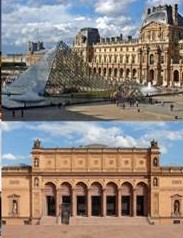 Vanderbilt’s History of Art majors are encouraged to apply for a spring 2019 Downing grant by Friday, February 15. The department awards these Downing grants for travel to exhibitions and research centers to supplement academic instruction for HART majors who are enrolled in the Honors Program, in advanced seminars, or in upper-level “W” (writing) courses. These grants, which provide assistance for up to $1,500 in travel costs, are awarded in the fall and spring of each academic year.
Vanderbilt’s History of Art majors are encouraged to apply for a spring 2019 Downing grant by Friday, February 15. The department awards these Downing grants for travel to exhibitions and research centers to supplement academic instruction for HART majors who are enrolled in the Honors Program, in advanced seminars, or in upper-level “W” (writing) courses. These grants, which provide assistance for up to $1,500 in travel costs, are awarded in the fall and spring of each academic year.
The application should consist of a detailed proposal of one page explaining the purpose and rationale of the proposed travel; projected costs (accommodation, food, travel expenses, and research costs); and a supporting letter by the instructor in charge of the project.
Applications for the spring 2019 Downing grants must be submitted by email to julia.kamasz@vanderbilt.edu no later than Friday, February 15.
Past Downing Grants have supported travel for research on photojournalism in post-war Berlin, a Marcel Duchamp installation in the Philadelphia Museum of Art, the Elgin marbles from the Parthenon in the British Museum, and a Gothic reliquary in the Louvre, among others. HART’s most recent Downing grant recipients, Liz Horner and Michelle Zhu, used the grant to travel to New York and Germany (Hamburg, Dresden and Bertlin) respectively to gather research for their Honors theses.
Posted by vrcvanderbilt on January 31, 2019 in HART, News, Student/Alumni, Vanderbilt University, VRC
Vivien Fryd to Moderate Feminist Art Project Panel at CAA Conference
Vivien Fryd, professor of history of art, will moderate one of The Feminist Art Project panels on February 16 at the annual College Art Association conference held this year in New York City. Intersectional feminist art has long dealt with the oppressions and violations stemming from colonialism, slavery, and couverture. Rape, Representation, and Radicality is a full-day symposium that will explore sex, power, and justice through intersectional art and activism, academics, and healing.
Fryd’s panel will address Gender, Sexuality, and Power: Social Activist Art Practices. Among the panelists is another Vanderbilt professor, Maria Magdalena Campos-Pons, the Cornelius Vanderbilt Chair of Fine Arts and professor of art.
Participants will address how sexual assault has affected feminist art practices, and who has power and why. What institutional changes are needed to work towards sexual justice, and how do race and gender impact the experiences and responses within the context of contemporary feminist discourse?
Posted by vrcvanderbilt on January 30, 2019 in Conferences, Events, HART, News, Vanderbilt University, VRC
Archaeologist Steve Wernke to Present AIA Lecture on January 29 in Cohen Hall
Steve Wernke, associate professor and director of the Spatial Analysis Research Laboratory, Vanderbilt’s Department of Anthropology, will address “Colonizing Spaces in the Andes: Toward Embodied Archaeological Perspectives Through Virtual Reality and Simulation” on Tuesday, January 29, at 6:00 pm in Cohen Hall 203. A hands-on VR demo and reception will follow in the Cohen atrium.
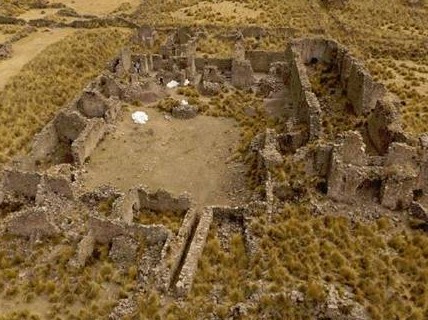 The Spanish invasion and colonization of the Andean regions of South America proceeded in large measure through projects of mass resettlement and compulsory urbanism. The Spanish brought with them certain Mediterranean orientations about urbanism that orderly cities and towns were not only a necessary condition but also a major force for civic community. Fueled by this ideological fervor, over the course of a decade—the 1570s—the Spanish forcibly resettled more than a million native Andeans into more than a thousand compact “reduction” towns. How these towns were situated and built, how living in them affected daily life in indigenous communities, and whether they produced the docile subjects and communities envisioned remain vexing questions.
The Spanish invasion and colonization of the Andean regions of South America proceeded in large measure through projects of mass resettlement and compulsory urbanism. The Spanish brought with them certain Mediterranean orientations about urbanism that orderly cities and towns were not only a necessary condition but also a major force for civic community. Fueled by this ideological fervor, over the course of a decade—the 1570s—the Spanish forcibly resettled more than a million native Andeans into more than a thousand compact “reduction” towns. How these towns were situated and built, how living in them affected daily life in indigenous communities, and whether they produced the docile subjects and communities envisioned remain vexing questions.
Wernke’s lecture renders these processes in detail through holistic spatial-analytical research centering on a spectacularly preserved reduction town in the high altitude reaches of the Colca Valley of southern Peru. Spatial analyses of the settlement and historical demography reveal the processes involved in locating and building the town as well as the mapping of Andean community onto its urban grid.
Free and open to the public, the event is cosponsored by the Archaeological Institute of America, the Program in Classical and Mediterranean Studies, and the Department of History of Art. Parking is available in all non-reserved spaces in Lot 95 near Cohen Hall on the Peabody campus.
Posted by vrcvanderbilt on January 25, 2019 in Digital Humanities, Events, HART, Lectures, News, Technology, Vanderbilt University, VRC
Sarah Madole Lewis to Lecture on a Tyrian Battle Sarcophagus on January 24
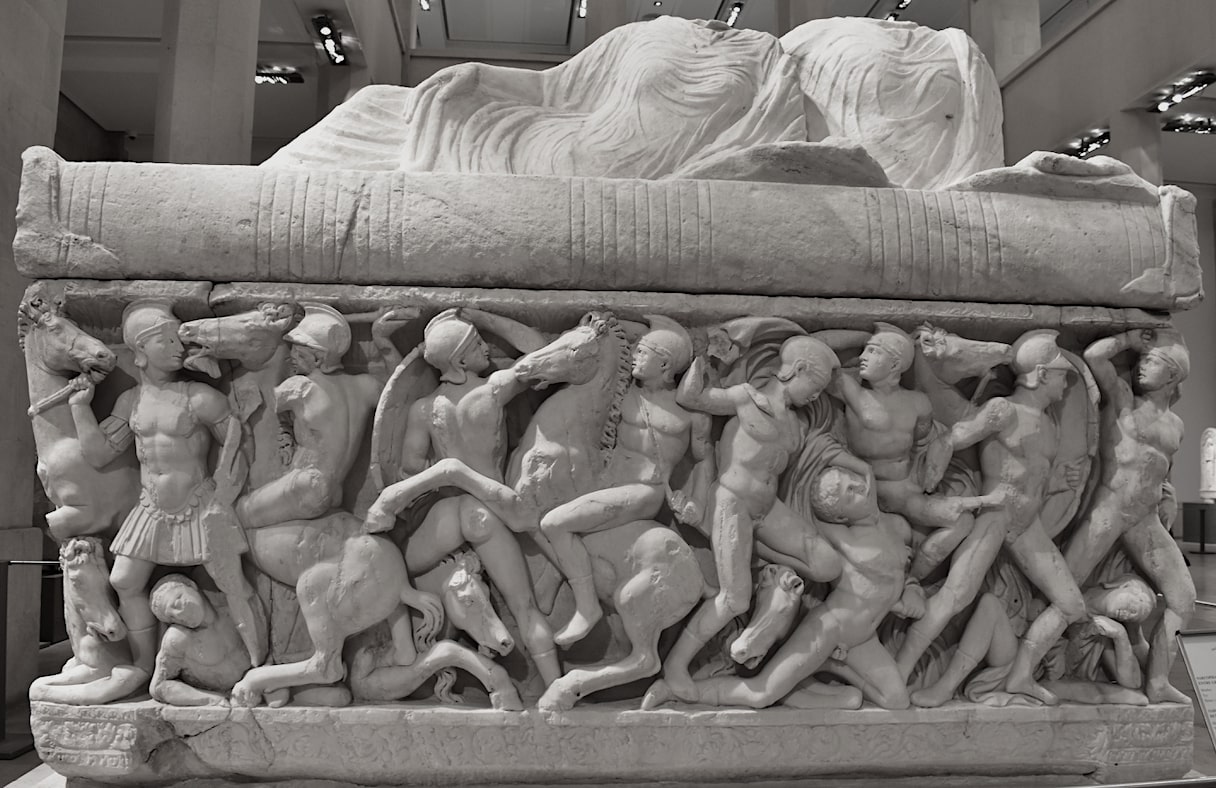 Sarah Madole Lewis, assistant professor of art history, Borough of Manhattan Community College, CUNY, will present a lecture on Thursday, January 24, at 4:10 pm in Cohen Hall 203, with a reception to follow in the atrium. The lecture is entitled “A Third-Century Battle Sarcophagus in Tyre: Love and War in Roman Syria.”
Sarah Madole Lewis, assistant professor of art history, Borough of Manhattan Community College, CUNY, will present a lecture on Thursday, January 24, at 4:10 pm in Cohen Hall 203, with a reception to follow in the atrium. The lecture is entitled “A Third-Century Battle Sarcophagus in Tyre: Love and War in Roman Syria.”
Lewis will consider a monumental sarcophagus found in Tyre, a wealthy city in the Roman province of Syria. Scenes of battle from the Trojan War decorate the sarcophagus chest, and the owner-couple recline on the couch-shaped lid. Thus, the heroic, manly scene is juxtaposed with an expression of marital unity and love. The sarcophagus type, which is connected with the Attic tradition, and its imagery, carried a particular expression of identity politics in the Roman world, in Tyre and other provincial spheres, such as Ephesos. Lewis will examine the Tyrian sarcophagus in light of related regional and interregional funerary monuments in its third-century context, a time of war and political upheaval in the eastern provinces of the Roman Empire.
Lewis received her Ph.D. from the Institute of Fine Arts, New York University in 2012. Her primary area of expertise is in the art and archaeology of the ancient world, with a specialization in Roman sarcophagi, regional contexts and social experience. In recent years she has held a faculty development grant for research in Lebanon. In support of her research on sarcophagi and catacombs in Rome, Lewis received a Franklin Grant from the American Philosophical Society and was named Shohet Scholar of the International Catacomb Society. Her research has taken her from Spain to Syria and everywhere in between, most consistently to Italy, Greece and Turkey.
Sponsored by the Program in Classical and Mediterranean Studies with the support of the Department of History of Art, her lecture is free and open to the public. Parking is available in all non-reserved spaces in Lot 95 near Cohen Hall on the Peabody campus.
Posted by vrcvanderbilt on January 16, 2019 in Events, HART, Lectures, News, Vanderbilt University, VRC
“Then & Now: Five Centuries of Woodcuts” Opens January 10
 Then & Now: Five Centuries of Woodcuts (January 10-March 1, 2019) features more than forty prints from Vanderbilt’s collections, surveying the wide range of woodcuts created over 500 years and across many cultures. Together, these works speak to the arresting potential of the woodcut medium and its persistent place in contemporary art.
Then & Now: Five Centuries of Woodcuts (January 10-March 1, 2019) features more than forty prints from Vanderbilt’s collections, surveying the wide range of woodcuts created over 500 years and across many cultures. Together, these works speak to the arresting potential of the woodcut medium and its persistent place in contemporary art.
The Vanderbilt Fine Arts Gallery exhibit opens Thursday, January 10, in Cohen Memorial Hall on the Peabody campus, with a reception from 5 to 7 pm in the atrium. Gallery hours are 11am to 4pm Monday through Friday, and 1 to 5pm Saturday and Sunday.
Beginning with Michael Wolgemut’s Presentation of Jesus in the Temple (ca. 1491), the exhibition continues its survey through 16th-century examples by the Northern Renaissance master of the medium Albrecht Dürer, a student of Wolgemut, as well as works by other prominent German artists, including Lucas Cranach the Elder, Hans Baldung Grien, and Albrecht Altdorfer. Spotlighting printmaking practices outside of Germany are chiaroscuro woodcuts by Italian artists Ugo da Carpi, one of the first practitioners of this early form of color printmaking, and Antonio Fantuzzi da Trento, as well as an example by Netherlandish artist Paulus Moreelse. Also on view is a recently conserved 17th-century woodcut, Hercules Overcoming Envy, by Christoffel Jegher after a design by Peter Paul Rubens—often considered to be one of the most important works in the history of printmaking.
The 19th century is represented by The Works of Geoffrey Chaucer, a rare, large-scale volume printed in 1896 by William Morris, with engraved illustrations by Edward Burne-Jones, on loan from Vanderbilt’s Jean and Alexander Heard Libraries, Special Collections and University Archives.
Moving into the 20th century, a suite of powerful woodcuts created by World War I veteran and artist Conrad Felixmüller in 1918 and a work from 1923 by Gerhard Marcks help illuminate the medium’s more recent revival at the hands of prominent German Expressionists, who were directly inspired by medieval woodcuts. A print by Dadaist Hans Arp is included among those on view, along with works by other 20th-century artists such as the Americans Fritz Eichenberg and Sidney Chafetz. (The latter two are recent gifts that will be shown for the first time in the gallery.)
Two prints from a portfolio created by contemporary American artist Jay Bolotin, as source material for what may be the first animated woodcut film, are also on view, along with the film itself. Additional 21st-century prints, by the German artist Christiane Baumgartner and the Korean-born artist Koo Kyung Sook, bring the exhibition into the present, illustrating the medium’s arresting potential and persistent place in contemporary art.
A concurrent presentation of works in Gallery 2, curated by Vanderbilt Fine Arts Gallery intern Echo Sun (art and psychology major, Class of 2020), focuses on Japanese woodblock prints from the 19th and 20th centuries. This display of work reveals the enduring influence of traditional ukiyo-e (pictures of the “floating world”) prints, while highlighting examples of more contemporary, artist-driven expressions of the form. This companion presentation to Then & Now: Five Centuries of Woodcuts includes editions by Katsushika Hokusai, Utagawa Hiroshige, Tsukioka Yoshitoshi, Kiyoshi Saito, and Takahashi Hiroaki (Shotei), among other Japanese artists working in the woodblock print medium over these two centuries.
Free and open to the public, the exhibit, curated by Joseph Mella, gallery director, will be on view through Friday, March 1. Parking is available anywhere in Lot 95 on the Peabody campus, accessible from 21st Avenue South.
*Antonio Fantuzzi da Trento (Italian, 1510–1550). The Virgin, Christ Child, and Saint John the Baptist, after Parmigianino (Italian, 1503–1540), ca. 1540-1550, chiaroscuro woodcut on woven paper, 7-3/8 x 9-1/4 inches,The Anna C. Hoyt Collection, Vanderbilt University Fine Arts Gallery.
Posted by vrcvanderbilt on January 3, 2019 in Events, Fine Arts Gallery, HART, News, Student/Alumni, VRC
Julia Kamasz and Luna Offer Stress Relief to Students During Finals Week
 HART’s Julia Kamasz and Luna, her beloved border collie/therapy dog, spent several hours at the Vanderbilt Recreation and Wellness Center on December 12 to offer stress relief and study breaks for students during finals week.
HART’s Julia Kamasz and Luna, her beloved border collie/therapy dog, spent several hours at the Vanderbilt Recreation and Wellness Center on December 12 to offer stress relief and study breaks for students during finals week.
“Luna and I found great joy in interacting with the students,” said Kamasz, “and made some new friends.”
Therapy dog programs for stress relief are becoming increasingly popular in libraries and on college campuses across the United States. Studies have shown that petting an animal can lower blood pressure and heart rate, reduce stress and ease tension.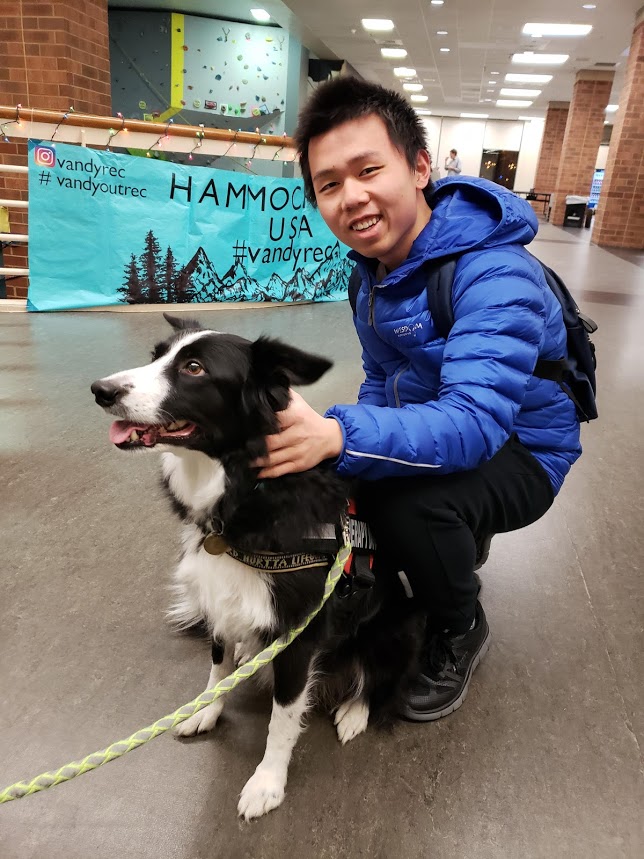
Therapy dogs also take exams. Luna undergoes training and testing throughout the year for canine good citizenship and therapy dog certification. She also serves as a therapy dog at the Davidson County Juvenile Court.
Luna works for Music City Pet Partners, a nonprofit organization serving Middle Tennessee and Southern Kentucky that promotes well-being, provides companionship, and educates our community by training and supporting therapy animal teams. For more information about the organization, please send general inquiries to info@musiccitypetpartners.org.
Posted by vrcvanderbilt on December 14, 2018 in Events, HART, News, Student/Alumni, Vanderbilt University, VRC

©2026 Vanderbilt University ·
Site Development: University Web Communications